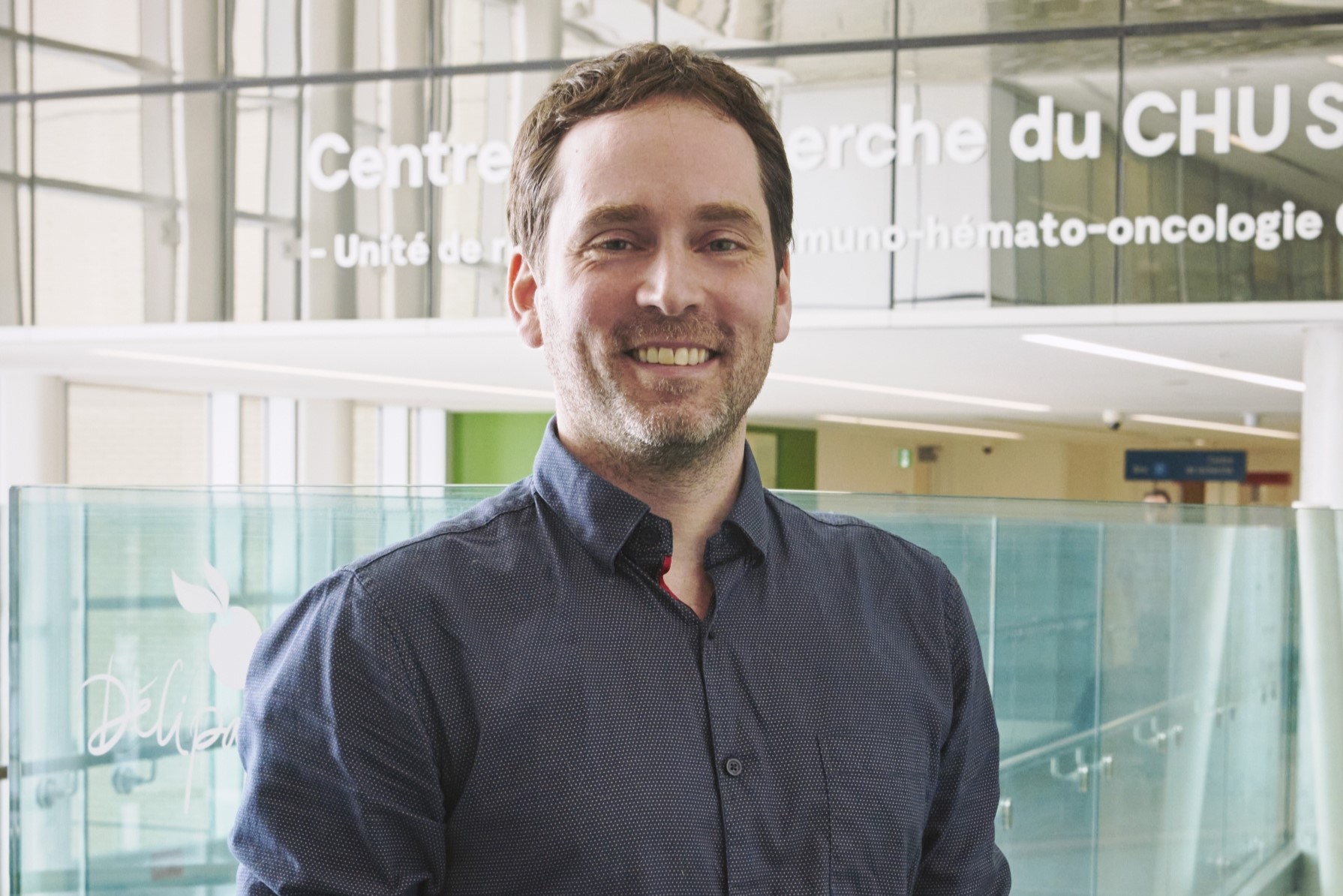Recent research by Drs. Nicolas Dumont and Elise Duchesne offers hope for a new treatment for myotonic dystrophy type 1 (DM1), a rare incurable disease that mainly affects the muscles.
DM1 is a genetic disease that affects 1 in 8,000 people worldwide. In Saguenay–Lac-Saint-Jean, however, it is far more prevalent, affecting 1 in 500. The condition is autosomal dominant, which means that a child has a 50% chance of developing the disease if one of their parents has it.
Impaired muscle regeneration
The symptoms of DM1 encompass a variety of muscle issues, including severe weakness and muscle tone problems. This is because DM1 impairs the function of muscle stem cells, which play an essential role in the growth and regeneration of muscle fibres.
What’s more, DM1 causes all of the body’s systems to age prematurely. It can therefore trigger a vast range of symptoms, such as problems with sleep, digestion, heart rhythm, the reproductive system, dexterity, and eyesight.
Strength in numbers
In the field of rare diseases, collaboration between researchers is vital due to the small number of cases and their complexity. This recent DM1 breakthrough—a remarkable team effort between Dr. Elise Duchesne, a research associate at the CIUSSS du Saguenay–Lac-Saint-Jean, and Dr. Nicolas Dumont, a muscle stem cell expert and a researcher at CHU Sainte-Justine—is a perfect example.
Over the past 10 years, Duchesne has built up an extensive sample bank that includes muscle biopsies from individuals with DM1. She analyzed these tissues with invaluable assistance from Dumont, and the pair were able to identify one of the mechanisms behind the disease: the presence of aging, or senescent, muscle cells, which produce an inflammatory environment that is toxic to healthy cells.
A number of drugs have already been proven to selectively eliminate senescent cells, and Dumont believes he has identified the one with the greatest potential to promote muscle regeneration in people with DM1. In laboratory tests with this molecule (i.e., the drug), muscle stem cells from affected individuals regained the ability to multiply, thus promoting the regeneration process.
This is a major step forward. Not only are we now able to better understand this rare disease, but we have information that will help improve the continuum of care and services.
Your generosity is having an incredible impact and benefitting families all across Quebec. Thank you for supporting Sainte-Justine’s researchers and sowing the seeds of hope for a healthier tomorrow!










